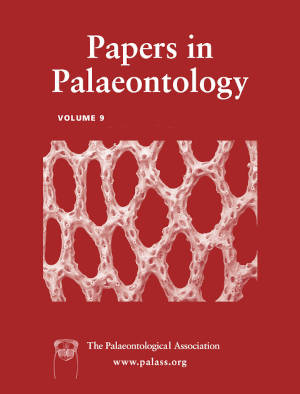Article: Eucera bees (Hymenoptera, Apidae, Eucerini) preserved in their brood cells from late Holocene (middle Neoglacial) palaeosols of southwest Portugal
Publication: Papers in Palaeontology
Volume:
9
Part:
4
Publication Date:
2023
Article number:
e1518
Author(s):
Carlos Neto de Carvalho, Andrea Baucon, Davide Badano, Pedro Proença Cunha, Cristiana Ferreira, Silvério Figueiredo, Fernando Muñiz, João Belo, Federico Bernardini, and Mário Cachão
DOI:
10.1002/spp2.1518
Abstract
Abstract The c. 100 myr extensive fossil record of bee brood nests and cells (calichnia) in siliciclastic sedimentary deposits, or palaeosols, is virtually devoid of the presence of their producers. The absence of a more specific assignment to a producer of the different ichnogenera of the ichnofamily Celliformidae precludes their use in phylogenetic and palaeobiogeographic studies. Omission surfaces developed in incipient carbonate palaeosols during the late Holocene (middle Neoglacial), c. 2975 yr cal BP, on the southwest coast of mainland Portugal show insect calichnia in dense ichnofabrics dominated by shallow discrete cells (Palmiraichnus castellanosi) and cells at the terminus of vertical shafts. At Carreira Brava, one of the studied sites, bees ready to abandon their cells were found in an exceptional state of preservation inside the sealed brood chambers. The chambers also preserve the inner cell hydrophobic polymerized membrane and remains of the monospecific Brassicaceae-type pollen provision. Although the cause of mass mortality remains a mystery, oxygen depletion due to sudden flooding of the nesting substrate and consequent or overnight temperature drop, just before emergence, are plausible causes. The anaerobic conditions and later rapid carbonate diagenetic lithification are the likely causes of the preservation of the bees and the inner cell organic membrane. The favourable climate conditions for the development of successive, dense ichnofabrics from an omission suite dominated by bee brood cells may be the result of slightly colder and higher-precipitation winters during the Neoglacial interval.
